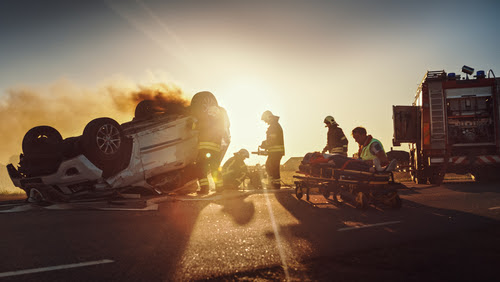Riding in the bed of a pickup truck, whether for leisure or transportation, may seem like an adventurous or convenient choice, but it is fraught with dangers and risks that should not be underestimated.
Riding in the truck bed is dangerous for a variety of reasons. First, there are no seat belts in the back of a truck. Anyone involved in a collision in the back of a truck will invariably be thrown from the truck. According to the National Conference of State Legislatures, this sort of accident accounts for more than 200 deaths a year, nationwide. Still, only 30 states have laws that prohibit riding in the back of a truck.
Virginia law prohibits passengers under the age of 16 from riding in truck beds. It does not prohibit adults from riding back there.
In North Carolina, people 16 and older or persons 15 and younger if a supervising adult is present in the cargo area are allowed to ride in the back of a pickup truck. North Carolina allows children if the child is belted, in emergencies, in parades, or if the vehicle is being used in agriculture.
Ejection Risk
One of the most significant dangers of riding in the bed of a pickup truck is the risk of ejection in the event of an accident or sudden stop. Unlike passengers inside the cabin, those in the cargo area do not have the protection of seat belts or the vehicle’s structure to keep them secured. In the event of a collision or abrupt braking, passengers can be thrown from the truck, leading to serious injuries or fatalities.
Lack of Restraints
Pickup trucks are not equipped with seat belts or proper restraints in the cargo area. This means that passengers are entirely unrestrained, making them vulnerable to sudden movements, jolts, and impacts. Without restraints, even minor accidents or swerves can result in passengers being tossed around or out of the truck.
Impact with Cargo
In the bed of a pickup truck, passengers are often in close proximity to any cargo or objects being transported. During transit, cargo can shift, slide, or fall, potentially striking passengers and causing injuries. Loose items can become dangerous projectiles in the event of a sudden stop or collision.
Weather Exposure
Passengers in the bed of a pickup truck are exposed to the elements, including rain, wind, sun, and extreme temperatures. Exposure to adverse weather conditions can lead to discomfort, heatstroke, hypothermia, or sunburn, depending on the prevailing conditions.
Carbon Monoxide Inhalation
If the pickup truck is equipped with a diesel engine or if it’s in heavy traffic, passengers in the cargo area may be at risk of inhaling harmful exhaust fumes, including carbon monoxide. Prolonged exposure to these fumes can result in carbon monoxide poisoning, which can be life-threatening.
Lack of Visibility
Passengers in the cargo area have limited visibility compared to those inside the cabin. This limited view can make it difficult for them to anticipate road hazards, other vehicles, or pedestrians, increasing the risk of accidents.
Unstable Riding Conditions
The ride in the bed of a pickup truck can be rough and unstable, especially on uneven or unpaved roads. Passengers may find it challenging to maintain balance, increasing the likelihood of falls or injuries.
Unsafe Behavior
The lack of seat belts and the perception of being outside the vehicle can sometimes lead passengers in the cargo area to engage in risky behaviors, such as standing up, leaning over the sides, or sitting on the edge. These actions can further increase the risk of accidents and injuries.
In any case, if you can avoid riding in the back or having a child back there, our Virginia Beach personal injury lawyers advise that you should do so. This practice costs the nation about 200 lives per year. Any steps we can take toward prevention should be taken.
